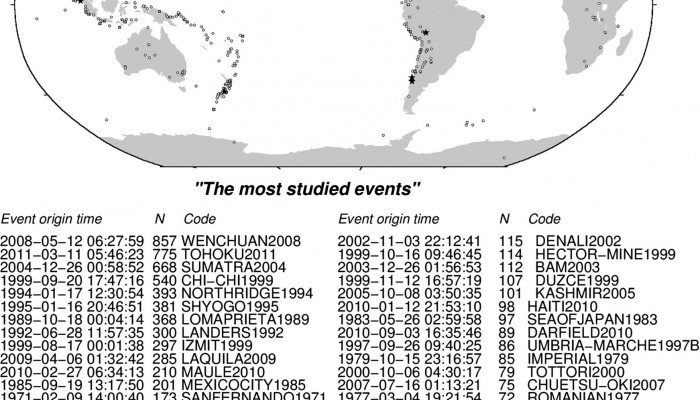Petrologists spend a large part of their time peering down microscopes at wafer thin slices of rock to work out what they’re made of and how they were formed. What lies on the other side of the lens can be an incredibly beautiful pattern, a kaleidoscope of colour, or stark bands of black and white, all of which provide clues to the rock’s history, and the history of the landscape it came from. Ber ...[Read More]
If you didn't find what you was looking for try searching again.
Geology Jenga
EGU DIARIES: Day Three (30th May).
After a busy start to the conference, I decided to take it easy on Wednesday. Whilst there was a range of really interesting sessions that caught my eye, I decided instead to dedicate some time to talking to people (I’ve got some really interesting 10 minute interviews coming up!). In the afternoon, I attended the Great Debate, Metals in our backyard: to mine or not to mine. As outreach is somethi ...[Read More]
Polluting the Internet
EGU 2014 Day 1: A day in the life of an aerosol particle
My first day at EGU 2014 in Vienna was principally spent listening to various speakers describe the life and death of tiny particles in the atmosphere, known as aerosols. These aerosol particles come from a variety of sources – one of the major sources is through burning of fossil fuels, which produces a cocktail of pollutants that form these particles. They can also arise from natural sourc ...[Read More]
GeoLog
Imaggeo on Mondays: A rolling stone gathers no moss
Philippe Leloup brings us this week’s Imaggeo on Mondays, with tales from a mountain trail that show a geologist can never resist a good rock! This image is that of a polished slab of a rock composed of interlayered marbles and amphibolites. The sample was once part of a small dry-stone wall bordering an outdoor kitchen along a trail along the Ailao Mountain Range in China (or Ailao Shan in Chines ...[Read More]
Soil System Sciences
Soil color never lies
Often, soil color is described using general terms such as “brown”, “red”, “dark”, etc. When I talk about this issue for the first time with my students of Soil Science, I use to ask them how to describe the color of a soil sample. Normally, in a few seconds, I get a list of color names ranging from dark brown to bright red, including “chocolate”, “coffee” and “ ...[Read More]
Seismology
A bibliography of seismic events
Search for previous scientific work is never an easy task. Thanks to the internet and good search engines such as Google Scholar this process has been made a bit more easier. (It makes young scientists wonder how searching was done in the pre-internet days!). Although searching nowadays seems to be a simple tasks, it still requires putting in the correct combination of search terms. Furthermore yo ...[Read More]
Polluting the Internet
Fire in Salford
My commute to work yesterday morning took an unexpected turn as my train pulled into my usual stop in Salford, Greater Manchester. To my right was a huge plume of smoke, which I would usually associate more with deforestation fires in Brazil! A plume of black smoke was rising up against the backdrop of beautifully clear skies, with the smoke gradually changing to a lighter shade of grey higher up. ...[Read More]
Polluting the Internet
Aerosols and the pause
There is a new commentary piece in Nature Geoscience by Gavin Schmidt and colleagues on ‘Reconciling warming trends’. The paper investigates several potential causes for the discrepancy between climate model projections and the recent ‘slowdown’ in global surface temperatures, which is nicely illustrated on Ed Hawkins’ Climate Lab Book blog. One of the aspects the pap ...[Read More]
GeoLog
Imaggeo on Mondays: Friends in the field
Out in the field you encounter all sorts of wildlife and while mosquitos are the most frequent (and most unwelcome), they generally don’t interfere with your equipment or your data. The same can’t be said for all animals though, and many scientists have to strap their equipment out of reach, barricade it with barbed fences or place it in a relatively indestructible black box. It’s a particular pro ...[Read More]
Polluting the Internet
What did the IPCC say about aerosols?
Aerosols dominate the uncertainty in the total anthropogenic radiative forcing. A complete understanding of past and future climate change requires a thorough assessment of aerosol-cloud-radiation interactions. This is one of the conclusions about aerosols and their impact on our climate from the the final report from the Intergovernmental Panel on Climate Change (IPCC) on the physical science bas ...[Read More]

